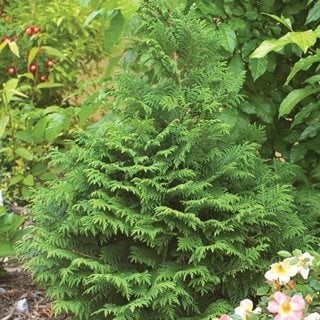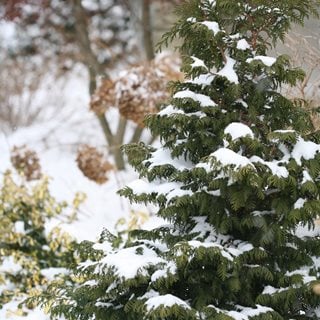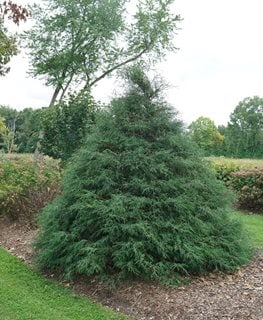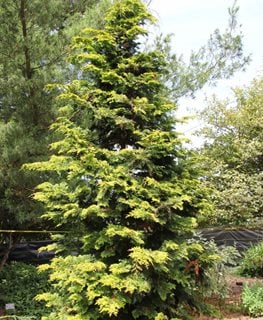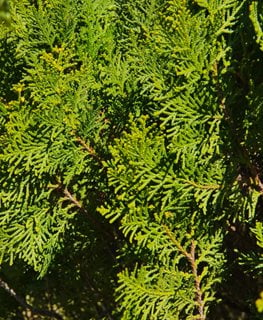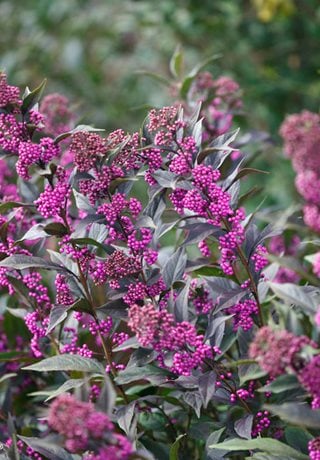A Guide to Growing False Cypress Trees & Shrubs
Add low-maintenance four-season color to your landscapeFalse cypress are hardy conifers valued for their year-round color, disease-resistance and easy-care nature. Native to Japan, Taiwan, and parts of the U.S., these cypress relatives grow quite large in their natural habitat. Most garden cultivars are bred for their smaller stature.
These sturdy evergreens prefer temperate climates and do not perform well in hot, dry, or windy conditions. False cypress are versatile in the landscape, lending color, texture, and structure to beds, borders, containers, and mass plantings. Here’s how to grow and care for these popular landscape shrubs or trees.
On this page: Basics | Planting | Care and Maintenance | Pictures | Design Ideas
On this page:
- BASICS
- PLANTING FALSE CYPRESS
- CHAMAECYPARIS CARE AND MAINTENANCE
- FALSE CYPRESS VARIETIES
- DESIGN IDEAS
CHAMAECYPARIS BASICS
Botanical name:
Chamaecyparis spp.
Zones:
3-9, depending on species
Habit:
Upright mounding, pyramidal, or columnar habit
Height/Spread:
5 to 130 feet tall, 6 to 25 feet wide, depending on the variety
Light exposure:
Full sun to partial shade
Color and characteristics:
False cypress are evergreen conifers grown for their finely dissected foliage, which adds year-round color and soft texture to the landscape. Varieties come in different forms, sizes, and foliage colors, including green, blue-green, gold, chartreuse, and purple. Inconspicuous cone-like structures appear in spring. Rough or smooth bark is dark or reddish brown, while foliage and bark can be aromatic.
Toxicity:
False cypress are not toxic to pets and children.
Are chamaecyparis deer resistant?
False cypress are considered deer-resistant, though any plant may be susceptible to deer browsing if other food sources are scarce.
HOW TO PLANT FALSE CYPRESS
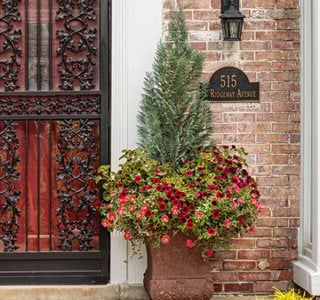
See how to change up this container throughout the seasons using Pinpoint® Blue false cypress as a centerpiece. Photo by: Proven Winners
When to plant:
Plant during the cooler months of spring or fall to avoid heat or cold stress.
Where to plant:
Choose a site with adequate light, well-draining soil and protection from wind.
How to plant:
Loosen soil in planting area and amend with compost or other organic matter if needed. Dig a planting hole 2-3 times wider than the diameter of the root ball and slightly shallower. Tease out roots or make several slits in the root ball. Place plant in the hole with the top of the root ball level or slightly shallower than the surrounding ground. Add soil to the sides of the root ball with soil and water well to remove air pockets. Water once or twice weekly until established.
Spacing:
Allow enough space around plants to accommodate their mature size.
Planting false cypress in containers:
Make sure pots have adequate drainage holes. Use a high-quality, all-purpose potting soil.
CHAMAECYPARIS CARE
Soil:
False cypress prefer amended or average well-draining soil, with a slightly acidic to neutral pH between 5.5 and 7.5.
Watering:
Keep soil evenly moist but not soggy. Overwatering can cause root rot. Increase watering during heat or dry spells. Containers dry out more quickly and will need more frequent watering.
Amendments and fertilizer:
When given optimal growing conditions, false cypress need little or no supplemental fertilizer. If desired, fertilize in early spring with an all-purpose granular fertilizer or one that’s especially formulated for trees and shrubs according to package instructions. Reapply annually.
Mulch the root zone with a 2- to 3-inch layer of ground bark to cool the roots, suppress weeds, and conserve moisture.
Pruning:
False cypress look best when allowed to retain its natural shape and size. Any pruning should be done judiciously. Avoid cutting plants back too hard, as they won’t regenerate on old wood.
- Remove dead, diseased, or crossing branches.
- Cut back errant branches and lightly shape as needed.
- To encourage more branching, lightly prune back branch tips to just above a joint.
Pests and diseases:
When planted in the right conditions, false cypress exhibit few pests and diseases. Pests can include spider mites, scale, weevils, bagworms, and bark beetles. Diseases include tip blight, root rot, and canker.
FALSE CYPRESS VARIETIES
False cypress alternatives:
Substitute false cypress with other conifers such as spruce, yew, pine, or juniper.
USING CHAMAECYPARIS IN THE GARDEN
- For borders and landscapes: Use as hedging or screening, as a background element in a mixed border, or as a stand-alone focal point.
- For slopes and hillsides: Mass along a slope to help stem erosion. Plant groupings of varieties with different shapes, sizes and colors for a more visually pleasing effect.
- For containers: Plant smaller specimens in containers for a formal display. Transplant into the landscape after a few years when plants become larger.
There are many ways to incorporate false cypress into your landscape. Here’s how:
- Plant gold-foliaged varieties in combination with other evergreens with blue-green foliage for complementary color in the landscape.
- Use a dwarf variety in a foundation planting in combination with other dwarf conifers and deciduous or evergreen flowering shrubs for continuous color throughout the year.
- Place large decorative containers on either side of a front entryway and plant with columnar specimens. Add perennials such as hellebores and coral bells for a multi-seasonal display.
- Plant a larger specimen in an island bed as a stand-alone accent.
- Plant a dwarf specimen in a rock garden in combination with alpine plants to provide year-round color and structure.
- Combine with witch hazel, hellebores, heathers, and bulbs such as snowdrops, winter aconite, and crocus for a dazzling early season display.
RELATED:
Shrubs 101
Small Evergreen Shrubs
Guide to Conifers
The Best Evergreen Trees for Residential Gardens
